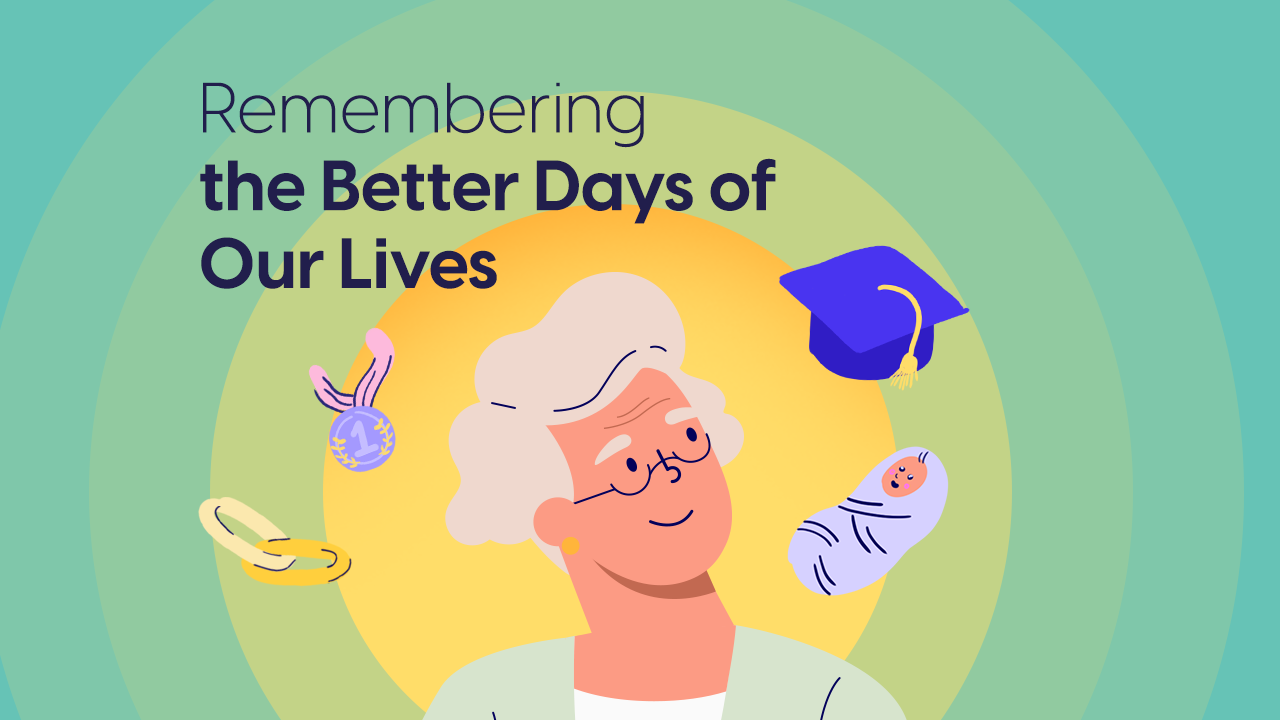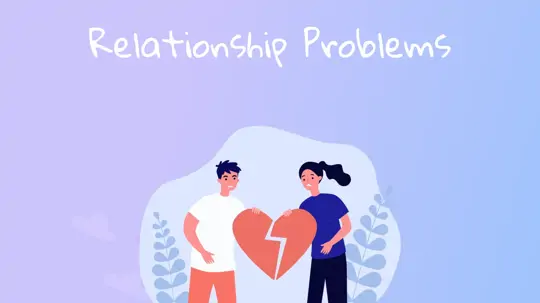
Start feeling better today!
Connect with your therapist today and take control of your life like our 850.000 happy clients.
Get StartedAll living beings have a memory to continue their lives. For some species, memory has a survival value. In nature, animals must remember their predators in order to run away from them. Otherwise, this memory loss could end their lives.
Long ago, memory had a survival effect on humans because they lived in caves and more dangerous environments than now. Memory is a process that is more diverse in human beings than in other species. Human memory is more complex than the memory processes of different species. People encode and recall personal, social, and historical events as social beings.
Self-related memories are also called "autobiographical memories" [1].
Autobiographical memories are sophisticated combinations of individual, recurring, and societal memories that create the story of the self. Autobiographical memories are created and evaluated according to socio-cultural practices [2].
Three interesting phenomena have been discovered in studies on autobiographical memory:
-
Childhood amnesia
-
Recency effect
-
Reminiscence bump
This article will focus on the reminiscence bump, but let’s quickly look at the first two phenomena.
First, childhood amnesia refers to not remembering the early years of life. From the ages of 0 to 8, there is a limited recollection of autobiographical memory (3). Second, the recency effect indicates that individuals recall memories of recent events easily, but the frequency of these kinds of memories decreases naturally over time (4).
Reminiscence Bump
People over 30 years old tend to remember certain parts of their lives more vividly in the lifespan recall curve. Older people indicate increased memories of events from their 10 to 30 age range. The phenomenon is known as a "reminiscence bump." [5]: The findings of reminiscence bump are consistent across autobiographical research; all people over the age of 30 have better memories of their adolescence to young adulthood period [6].
Interestingly, sad and traumatic memories are not included in the reminiscence bump. People only show reminiscence bumps for positive, significant life events.
In reminiscence studies, people are asked to freely call upon their memories, or experimenters give them cue words and ask them to recall a memory about that. People tend to remember memories from their early ages, including happy and valuable memories related to families, relationships, education, and work.
Reminiscence Bump Theories
As mentioned above, the reminiscence bump is a robust finding that all individuals experience. Then the next question would be, "WHY?" Why does everybody have better memories of their younger ages?
Scientists investigate the same question and come up with some relevant theories:
Cognitive Account
According to cognitive theory, novel experiences are more memorable, and the novelty is stored in the memory [7].According to studies, first-time experiences and unique events are more likely to be remembered vividly later in life. Many life events are experienced for the first time at a young age. Thus, events experienced in adolescence and young adulthood are easily recalled and remembered.
Cognitive Abilities Account
According to cognitive abilities theory, the brain’s maturation reaches its peak from adolescence to young adulthood. At that time, individuals have better cognitive and neural functions to learn, process, and retain information. The events, experiences, and knowledge were encoded for that specific period to last longer in memory [6].
Cultural Life Script Theory
A "life script" can be defined as the occurrence of typical and culturally expected events at a predicted time in one’s life. This theory argues that individuals prefer a life narrative that includes positive memories and culturally expected and normative happy events. Most cultures have norms such as getting married, having childbirth, and graduating from university. Also, there is a culturally expected time for those events. Most people graduate, get married, and have children in their 20s; that's the target of the reminiscence bump. According to this account, normative life events are crucial in recalling autobiographical memories [7].
Identity Theory
Erikson (1950) clarifies that the identity of adults emerges during late adolescence and young adulthood. Individuals have self-defining experiences in that period, making these memories more memorable [9]. The identity theory arises from there. According to this account, adolescence and early adulthood are critical to developing an adult identity. At that young age, people engage with people and activities to help them build an identity and narrate their life stories. Experiences from that specific period are involved in one’s lifelong narratives and stories; for this reason, people can recall these events even later in life [6].
Let’s play a game. Ask someone older than 35 years old: “What memories would you include in a book about your life? Think about their answer. Do they show a reminiscence bump?
What is your opinion on which theory explains the reminiscence bump most?
References
[1] Fivush, R. (2011). The development of autobiographical memory. Annual review of psychology, 62, 559-582.
[2] Williams, H. L., Conway, M. A., & Cohen, G. (2008). Autobiographical memory.
(3) Rubin DC. The distribution of early childhood memories. Memory. 2000;8(4):265–9. pmid:10932795
(4) Rubin DC, Wenzel AE. One hundred years of forgetting: A quantitative description of retention. Psychological review. 1996;103(4):734. 00006832-199610000-00006.
[5] Homes A., and Conway M. A. (1999) Generation Identity and the Reminiscence Bump: Memory for Public and Private Events. Journal of Adult Development, 6(1): 21-34.
[6] Munawar K., Khun, S. A., and Haque S. (2018) Understanding the reminiscence bump: A systematic review. PLOS ONE 13(12): e0208595.
[7] Rathbone, C. J., Moulin, C. J., & Conway, M. A. (2008). Self-centered memories: The reminiscence bump and the self. Memory & cognition, 36(8), 1403-1414.
[8] Berntsen, D., & Rubin, D. C. (2002). Emotionally charged autobiographical memories across the life span: The recall of happy, sad, traumatic, and involuntary memories. Psychology & Aging, 17, 636-652.
[9] Erikson, E. H. (1950). Childhood and society. New York: Norton. Fitzgerald, J. M. (1988). Vivid memories and the reminiscence phenomenon: The role of a self-narrative. Human Development, 31, 261-273
*The articles on our site do not provide medical advice and are for informational purposes only. A disorder cannot be diagnosed based on the articles. A disorder can only be diagnosed by a psychiatrist.





